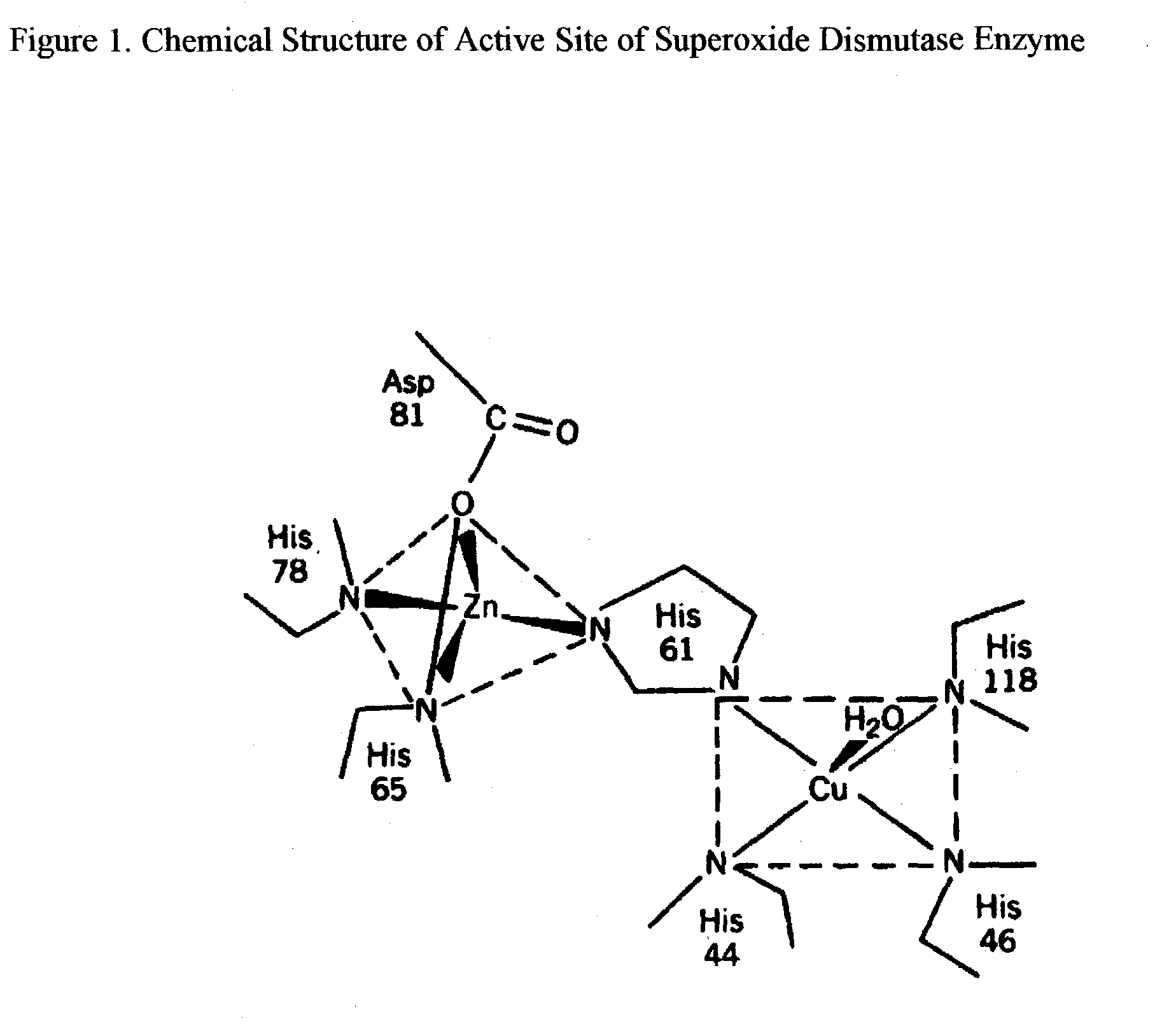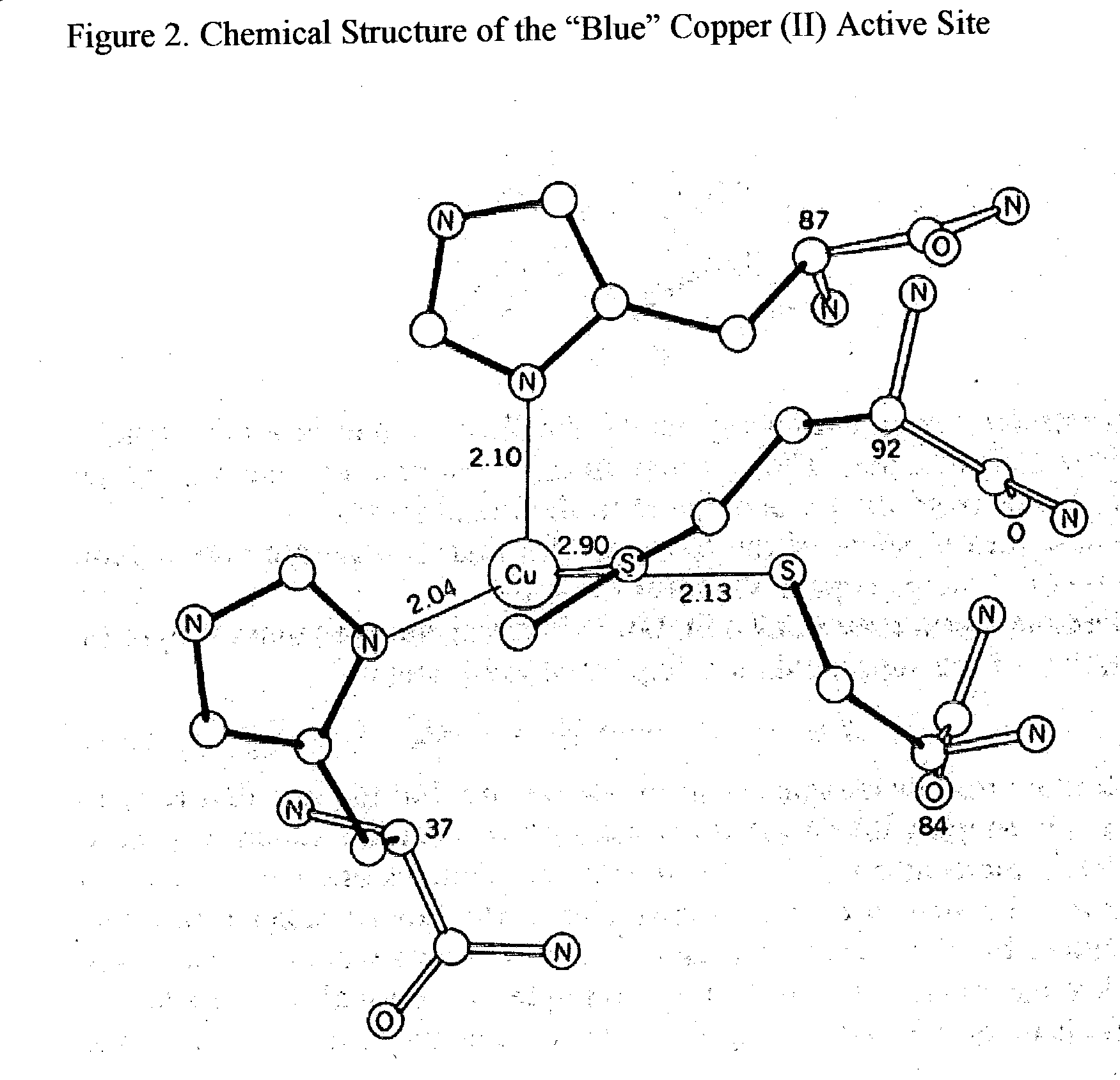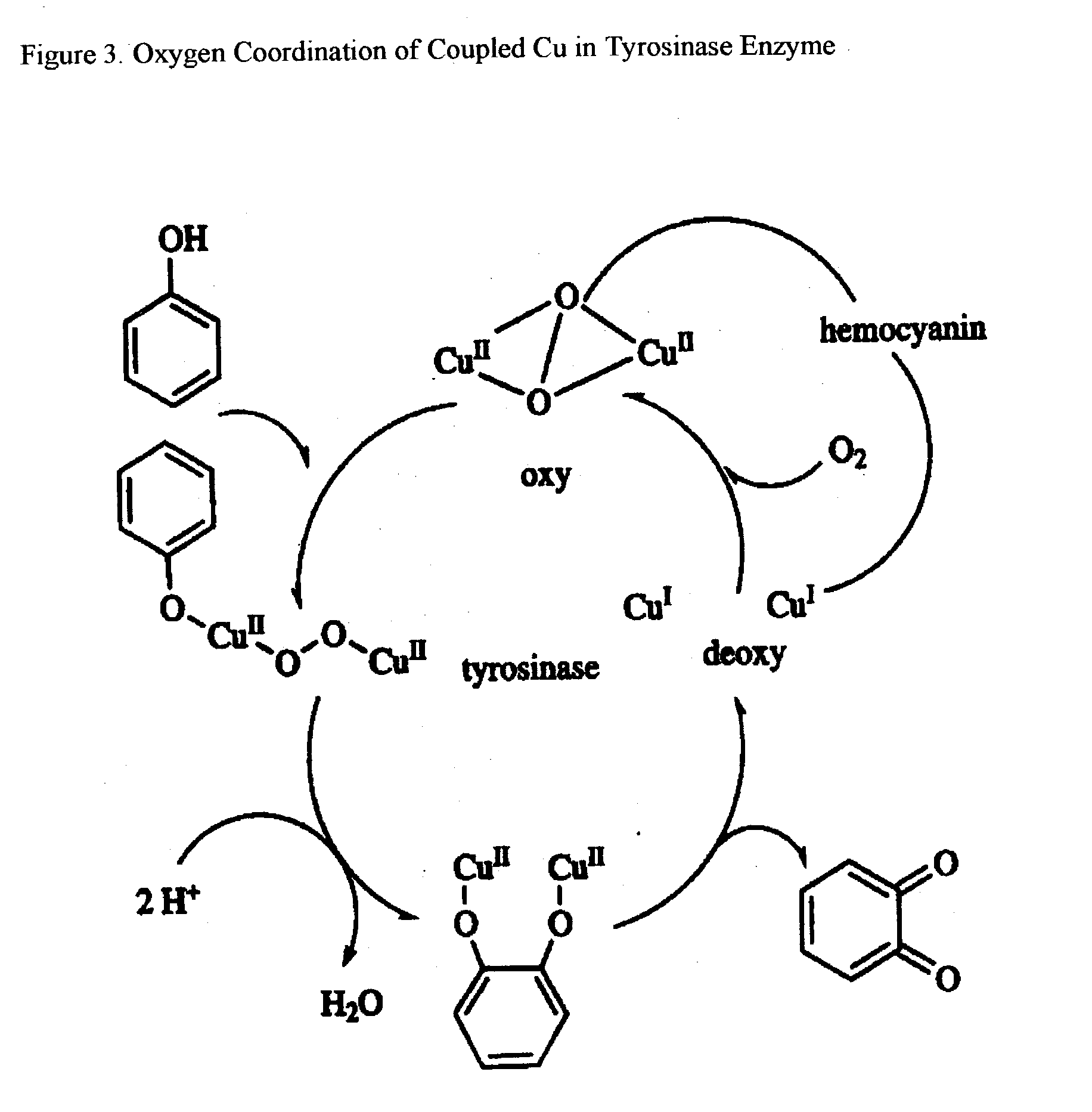Trace Metals synergized copper nucleotides and copper glycosides for anti-aging and antiviral compositions
a technology of anti-aging and antiviral compositions, which is applied in the direction of drug compositions, anti-noxious agents, peptide/protein ingredients, etc., can solve the problems of hair loss, thinning and deteriorating skin, and serious need for skin care compositions, and difficulty in working out their mode of action or even their application
- Summary
- Abstract
- Description
- Claims
- Application Information
AI Technical Summary
Benefits of technology
Problems solved by technology
Method used
Image
Examples
example 1
The Preparation of Copper ATP (Cu-ATP) Solution by In-Situ Method
[0120]
2 Ingredient % Part "A" 1. Copper Gluconate 2.25 2. Deionized Water 97.75 Part "B" 1. Adenosine Triphosphate (ATP) Disodium Hydrate 2.75 2. Deionized Water 97.25
[0121] Procedure: Ingredients 1 and 2 in Part "A" were mixed in a beaker. A clear blue solution was obtained. It had a pH of 4.0, and the color readings were L=36.15, a=-42.07, b=-6.55. These data indicate that "a" had a (-) value (green), and "b" also had a (-) value (blue). This means the solution was greenish blue in color. This was identified as solution, Part "A". Ingredients 1 and 2 of Part "B" were mixed in a separate beaker. A clear, water-like solution was obtained. It had a pH of 3.1, and the color readings were L=68.32, a=-0.82, b=+0.23. Since both "a" and "b" are negligible numbers (less than 1), that indicates that the sample had no color in it. This was identified as solution Part "B". Solutions of Part "A" and Part "B" were then mixed. A co...
example 2
The Stability of Cu-ATP Solution from Example 1
[0123] The solution "C" obtained per Example 1 was stored in a beaker with a plastic film wrapped over it. It was stored in full light (fluorescent lamps) under ambient room temperature conditions. The color readings were measured periodically, and any visually observed discolorations, or precipitate formations, if any, were also recorded, as noted below.
3 Initial 1 Week 4 Weeks "L" 53.52 51.35 50.54 "a" -33.58 -35.38 -36.08 "b" -4.19 -5.16 -5.56
example 3
Preparation of Cu-ATP-Glutathione Complex In-Situ
[0124]
4 Ingredient % Part "A" 1. Copper Gluconate 2.25 2. Deionized Water 47.75 Part "B" 1. Adenosine Triphosphate (ATP) 2.75 Disodium Hydrate 2. Deionized Water 47.25 Part "C" 1. Glutathione 1.50 2. Deionized Water 48.5
[0125] Procedure: Mix all "Part A" ingredients. A clear blue solution is obtained. Mix all "Part B" ingredients in a separate container. A clear, water white solution is obtained. Mix all "Part C" ingredients in a separate container. A clear water white solution is obtained. Mix solution of "Part A" with solution of "Part B". A greenish blue solution is obtained, as in Experiment 1. Add solution of "Part C" to above mixture of solution "Part A" and "Part B". A bluish green precipitate was immediately formed. The analysis of this precipitate shows that both glutathione and copper to be present. Cu content was 2100 ppm. This shows instant binding of Copper with Glutathione to form the new complex in-situ.
PUM
| Property | Measurement | Unit |
|---|---|---|
| average molecule weight | aaaaa | aaaaa |
| molecular weight | aaaaa | aaaaa |
| molecular weight | aaaaa | aaaaa |
Abstract
Description
Claims
Application Information
 Login to View More
Login to View More - R&D
- Intellectual Property
- Life Sciences
- Materials
- Tech Scout
- Unparalleled Data Quality
- Higher Quality Content
- 60% Fewer Hallucinations
Browse by: Latest US Patents, China's latest patents, Technical Efficacy Thesaurus, Application Domain, Technology Topic, Popular Technical Reports.
© 2025 PatSnap. All rights reserved.Legal|Privacy policy|Modern Slavery Act Transparency Statement|Sitemap|About US| Contact US: help@patsnap.com



